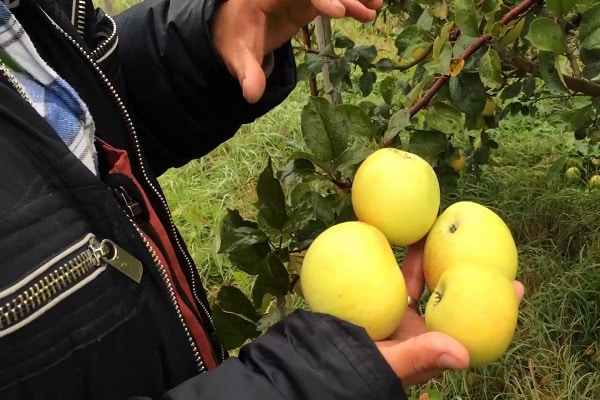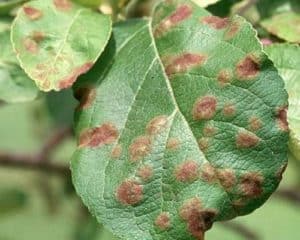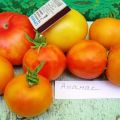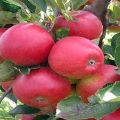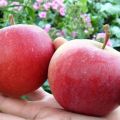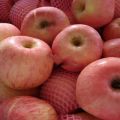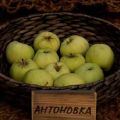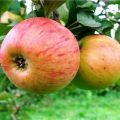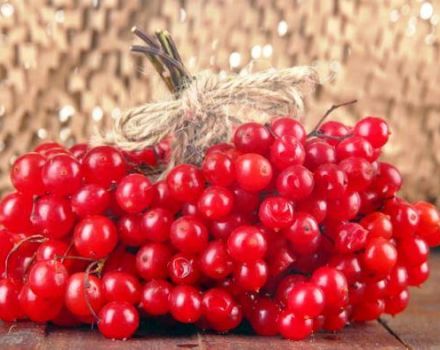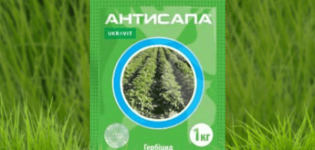Advantages and disadvantages of apple trees of the Pineapple variety, reviews of gardeners, characteristics and description of fruits
Few of ordinary consumers know the real number of varieties of apple trees growing on the territory of the Russian Federation. For them, apples are divided into imported and domestic, sweet and sour, large and small. In fact, everything is much more complicated. Papirovka, Antonovka, Champagne, Pineapple, Melba, Old Man Erliest, Early sweet, White filling, Golden Chinese - this is a small share of apple varieties. Below we will focus on the Pineapple apple variety.
Description of the variety
Oddly enough, it is not easy to get acquainted with a detailed description of the Pineapple apple tree. Most sites give a brief description of the species. However, to opt for the Pineapple fruit tree, this knowledge is not enough.

The apple tree of the Pineapple variety is a Western European type of autumn-ripening apple tree. But some gardeners call it a late summer variety. Fruits ripen, as a rule, in September, in a sunny area they can also at the end of August. Shelf life up to 4 months. And in conditions of optimal temperature and humidity, fruits can lie until December.
The apples are large, the average weight varies from 180 to 350 grams. The skin is dense, smooth, shiny, with a slight waxy coating. The color of the fruit is sunny yellow, with well-visible gray dots around the perimeter. On the sunny side, there is a slight reddish blush. The pulp is white-yellow, juicy, firm, with a sour-sweet taste and rich aroma. Apples have a persistent pineapple aftertaste, which is why the tree got its name. When removed, the fruits are firm, but after a short storage they become looser. The fruit is round in shape, somewhat reminiscent of a truncated cone.
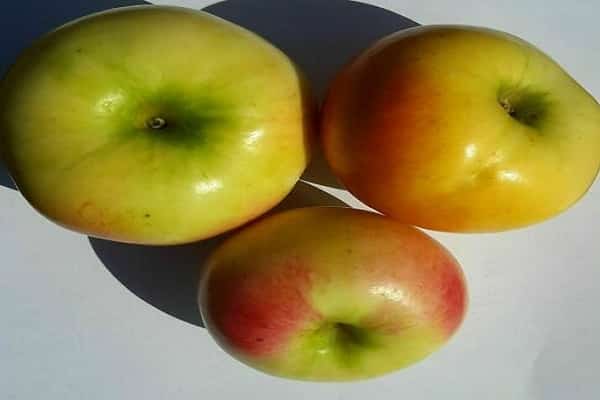
Advantages and disadvantages of the variety
Each type of apple tree has advantages that set it apart from other varieties, and Pineapple is no exception. The advantages of the variety include:
- palatability (the only apples with a slight pineapple aftertaste);
- winter hardiness (the variety is not afraid of low temperatures and survives weather fluctuations well);
- high resistance to such common apple diseases as scab and powdery mildew;
- long shelf life (4-5 months);
- annual fruiting;
- easy to transport.
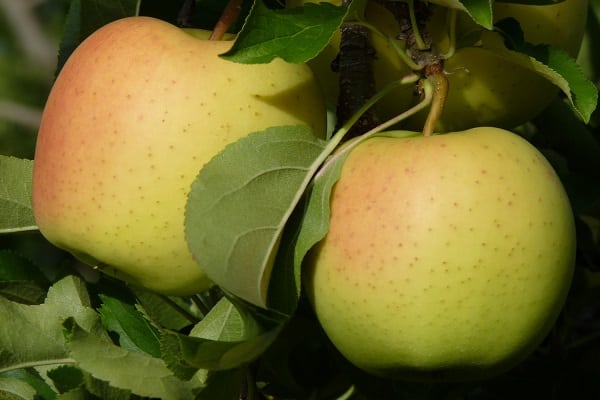
But there are also a number of disadvantages. Among them, the Pineapple variety is distinguished by:
- the tree is tall, which makes care difficult;
- low productivity;
- inconspicuous appearance of fruits, dull color;
- fruiting is possible in a year, if the apple tree is not looked after and the branches are not cut;
- have low resistance to other diseases and pest attacks.

Dimensions of an adult tree
The apple tree of the Pineapple variety is considered a vigorous tree, which makes harvesting difficult. Even with a stepladder, it is often difficult to reach the fruit. If they are not removed from the tree and wait until they fall, the shelf life of the fruit will be significantly reduced. But at the same time, the crown of the apple tree is rare, not wide, which makes it easier to care for the apple tree.
In many sources there is information that the Pineapple apple tree is literally 2-3.5 meters high, but in reality the apple tree easily reaches a size of 5 meters.
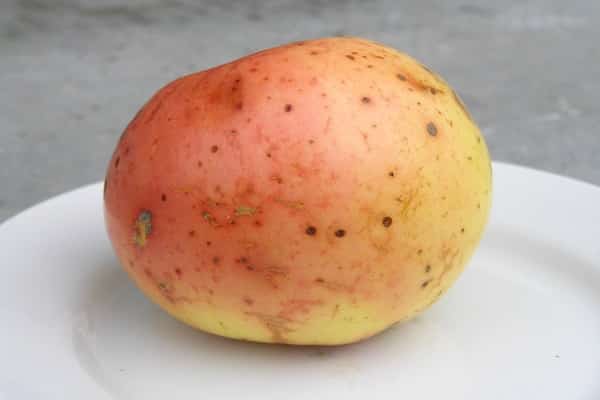
Productivity and taste of fruits
The apple variety Pineapple belongs to the medium-yielding species, but it pays off in the size of the fruits. The apples are large, firm, about the same size. With proper care (pruning branches, watering, feeding) the tree bears fruit annually. If you do nothing of this, then the Pineapple apple tree will delight you with fruits in a year.
Typical care steps include the following:
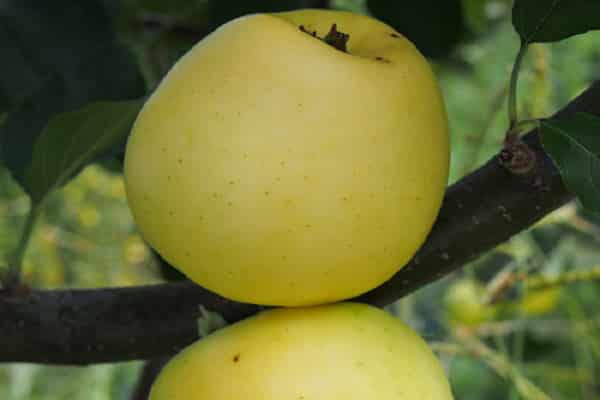
- if the summer is dry, then the apple tree must be watered on a regular basis;
- periodically weed and loosen the near-trunk area;
- whitewash the trunk in spring and autumn;
- spray with special means to resist pests;
- feed with fertilizers.
The fruits of this species have a sweet and sour dessert taste with a rich aroma and a light pineapple aftertaste. Hence the variety took its name. The apples are juicy and reveal the main flavor after they are removed from the tree. Tasting score on a five-point scale - 4.6 points.
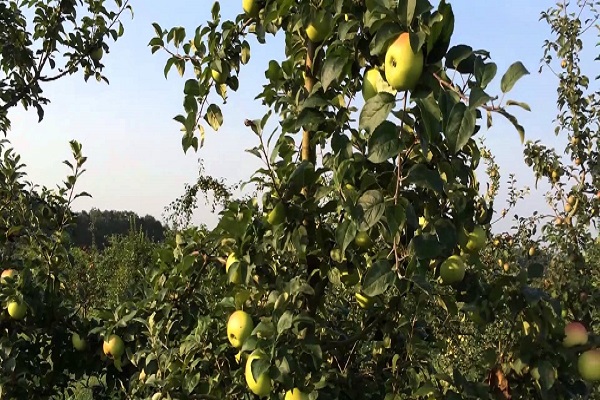
Winter hardiness
Apple-trees of the Pineapple variety are distinguished by high winter hardiness. Trees easily tolerate subzero temperatures, weather changes and do not need additional insulation. However, some gardeners recommend (this applies to the cold regions of the country) in especially harsh winters to cover the near-trunk circle with a layer of peat at least 10 centimeters thick, and lay dry leaves on top of it.
Choose a site for the apple tree that is better and longer than others, illuminated by the rays of the sun during the day. If the gardener has just planted Pineapple, then it will not be superfluous to cover the trunk for the winter.
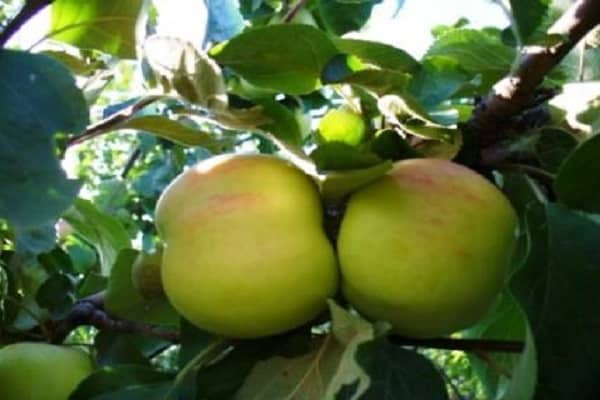
Disease resistance
Pineapple is moderately resistant to many apple diseases. Moreover, trees are almost never exposed to scab, powdery mildew. To protect the apple tree from other diseases, you need to treat the tree with special means, to feed it. And in order to avoid the attack of pests, you need to whiten the trunk in autumn and spring.
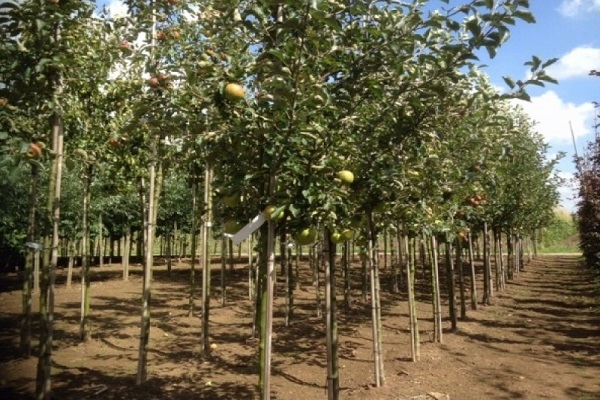
The timing of flowering and ripening of fruits
The apple tree of the Pineapple variety is distinguished by long flowering at a later time. Clearer terms depend on the temperature in the region. It should be set at between plus 15 and plus 20 degrees. In the first years, you need to cut off the flowers so that the tree put all its strength into growth and further delights with a delicious harvest.
Fruits usually ripen in September. But if it's a warm summer, and the area where the tree grows is sufficiently illuminated by sunlight, the apples may be ready to be picked in August.
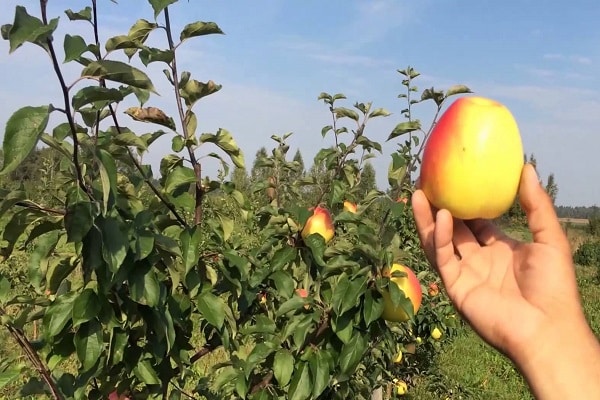
Growing regions
Considering the peculiarities of the variety, the Pineapple apple tree has taken root well in regions with a cold climate. Now it is grown in other regions of Russia: the Volga region, Central Russia, Northwest. The tree is unpretentious in care and in almost any climate gives good large fruits.
Gardeners reviews
Cyril, Volgograd: “I planted this variety on the advice of a neighbor. Now the tree is 5 years old, and every year it pleases with a good harvest. The apples taste amazing, not like the others (and we have 5 varieties of these trees in our garden). For sale, of course, one tree is not enough. We grow for ourselves. Taking into account the shelf life, we eat fresh juicy apples until spring. "
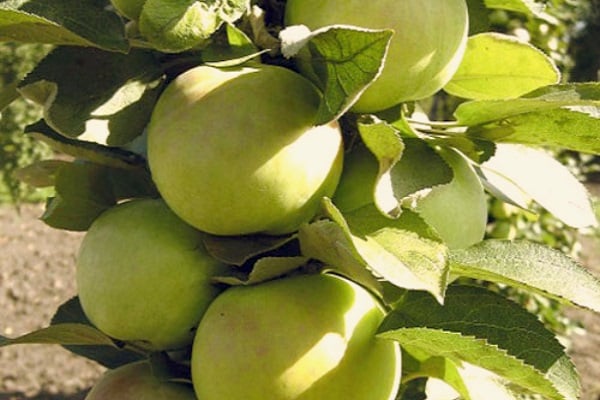
Christina, St. Petersburg: “I am not delighted with the tree. I will keep literally 1 bitch for my collection of varieties. The yield is very low, not enough even for myself, not to mention the sale. In addition, apples quickly crumble. It tastes, of course, gorgeous, but for the sake of a few fruits, I don't see the point of keeping a whole tree. "
Alexander, Yaroslavl: “I planted this tree on the advice of the seller. The fruits are not just big, they are huge. From the pros: the apples are tasty, stored for a long time, no special care is required. We eat them fresh, the wife sometimes adds to baked goods or preserves them. But the tree bears little fruit. If you have a large family or are in the business of selling, one tree is not enough. Another disadvantage is that the tree is tall, which makes it difficult to harvest and branch off. "
Stanislav, Nizhny Novgorod: “What I like about this tree is its unpretentiousness and taste of the fruit. After I got the first harvest, I planted 3 more such trees. Now I have enough for myself and for the whole big family. "
